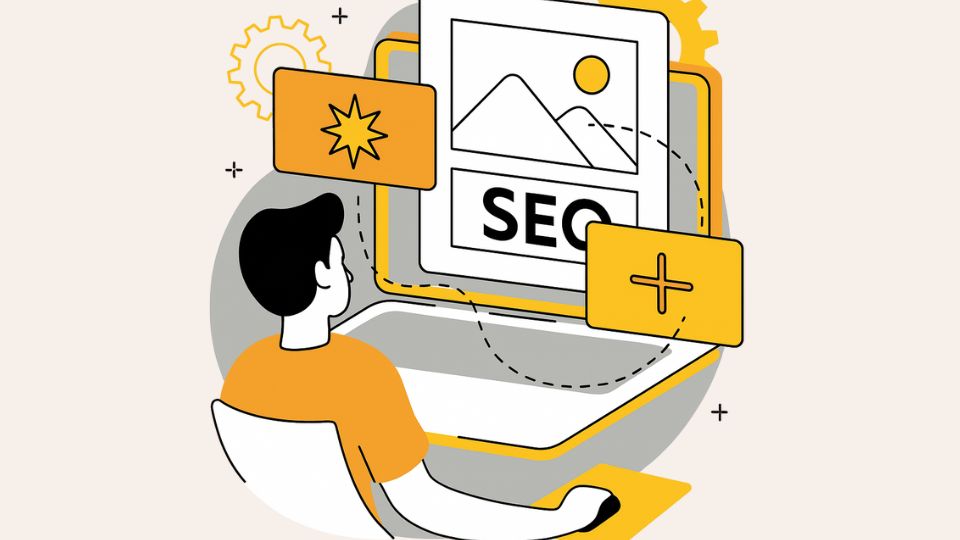
How to Optimize Images for SEO
Companies in the manufacturing and industrial sectors face an abundance of challenges when it comes to marketing their products, services, and solutions. Explaining complex technical processes is not easy to do succinctly and engagingly, nor is nurturing your prospects and leads as they meander through the buying journey.
Search engine optimization (SEO) is a practice that many in this space have heavily relied on to capture interest from potential B2B partners, suppliers, or clients, engage their services, and foster a beneficial partnership that serves both parties well. One of the most critical elements of a successful SEO strategy is the role of imagery, and the irony is that while manufacturers excel at precision engineering, it’s easy to overlook a comparatively simple and technical practice of image SEO optimization.
Images can serve as essential visual assets as part of your wider website and digital marketing strategy, showcasing your instruments and machinery, or breaking down complex processes into digestible and readable infographics or illustrations. However, each one has the potential to drive qualified traffic, leads, and prospects through to your site.
When correctly optimized, your images, whether they’re product images, facility banners, staff portraits, or process explainer documents, can appear prominently in Google image search results. Furthermore, as Google adopts a more AI-led search engine that is, coincidentally, incorporating more visual and interactive elements to generate more personalized answers, there is no better time to consider the value and performance potential of your imagery.
They could be the vital difference between passive, unengaged searchers and potential clients actively looking for your solutions.
Image SEO involves a handful of technical, on-page, and user experience (UX) considerations, but when you break these processes down, it becomes inherently more straightforward to accomplish. In turn, you can exponentially improve your website’s performance. As Google and other search engines value UX, site and page speed, and search intent very highly, these image optimization tips will help you create a site that is best placed to convert searchers and visitors into loyal, satisfied clients.
Choose the Right Image File Format(s)
Websites designed for B2B businesses have to be selective when it comes to their visual content. Detailed products, complex machinery in action, and highly technical and intricate items must be displayed prominently but without compromising on quality. The key is to balance image quality with file size, which, as we know, can dramatically slow down a website, and this is something many want to avoid, considering how users nowadays expect fast-loading websites. MPB’s guide on image file formats breaks down the key files to use for website imagery, explaining the concept of how images are created: either by a collection of pixels in a grid (raster images) or geometric shapes or equations (vector images). This information guides what types of image files we should choose when uploading visual content to our websites.

Image source: MPB
In a nutshell, the following key file types stick out for optimal web performance:
- WebP files – Google’s proprietary image file format offers exceptional compression without compromising visual quality, typically reducing file sizes by 25-25% compared to JPEG and PNG files. For high-resolution photos, WebP files are an efficient workaround, translating directly into faster page loads and a better overall UX.
- JPEG/JPG files – these files remain valuable for most candid and professional photographs on websites. While larger on average than WebP files, JPEG compression works well for images not requiring transparency.
- PNG files – these files are higher resolution, making them ideal for technical diagrams, logos, and transparent images. PNG files’ lossless compression means critical image details can be preserved, making them ideal for overlay graphics.
- SVG files – prove ideal for icons, technical illustrations and company branding that must scale across different devices.
In summary, using WebP files as your primary image format with JPEG backups to support all browsers and devices, as well as a handful of compressed PNG and SVG files (only where necessary), will ensure your site isn’t hosting an assortment of bulky, heavy images.
Add Responsive SRCSET Attributes
Visitors should be able to access your website from various devices, whether on tablets, desktop computers, or mobile phones, the latter of which is where the bulk of web traffic exists nowadays, as highlighted by recent findings from Exploding Topics. Wherever they access your site, it pays dividends if it is optimally designed and developed to support images on all devices.
Implementing responsive image design principles ensures that images can load in the relevant dimensions and screen sizes. Rather than forcing browsers to resize larger images manually with CSS, implementing SRCSET attributes to serve images based on device and screen size is a much easier and time-efficient solution.
Example below:
<img src=”cnc-machine-800w.jpg”
srcset=”cnc-machine-400w.jpg 400w,
cnc-machine-800w.jpg 800w,
cnc-machine-1200w.jpg 1200w”
sizes=”(max-max-width: 600px) 400px,
(max-max-width: 1200px) 800px,
1200px”
alt=”CNC precision machining center for automotive components”>
This process reduces the amount of data consumed during HTTP requests, accelerates page load speeds, and improves the user experience, which is handy when users are pressed for time and need to be immediately convinced.
Implement Lazy Loading
Lazy loading refers to the process of ensuring images load only when users scroll to them on their screen. For instance, if your website features images in the initial viewport when loaded, then they will load immediately, but all other images on the site won’t load until the user scrolls to the position where they enter the viewport.
It’s important to avoid lazy loading for vital above-the-fold content like hero images, product galleries, or images in calls to action (CTAs). These should load straightaway to create a strong first impression. This ensures that there are no wasted resources for images that users may never view, while rendering the most important images immediately.
For hero images, use:
<img src=”manufacturing-facility-hero.jpg” alt=”State-of-the-art manufacturing facility” loading=”eager”>
For product galleries and below-the-fold content, implement lazy loading:
<img src=”precision-component.jpg” alt=”High-precision machined component” loading=”lazy”>
Consider a Content Delivery Network (CDN)
If your business serves clients internationally and has its hands in numerous jurisdictions, supply chains, and markets, it’s important to ensure your imagery loads and works well for users based on their geographical location. Deploying the services of a CDN makes it easier for optimal image delivery, with providers such as imgix, Cloudinary, NitroPack, and more, optimizing images based on the user’s location and device.
CDNs serve WebP files dynamically to compatible browsers while providing JPEG fallbacks, automatically resize images, and apply compression through URL parameters. CDNs are distinct in their ability to serve resources to browsers from a server that’s closer to their IP, making resources travel shorter distances, thus speeding up delivery time.
Optimize Image Metadata and File Structure
Image SEO also involves strategic naming and metadata. The following must be added when uploading images to your website:
- Descriptive, keyword-optimized filenames (e.g., “stainless-steel-cnc-machining-automotive-parts.jpg” rather than “IMG012.jpg”)
- Alt text to each image that provides a detailed description that serves an SEO and accessibility purpose (e.g., “high-precision cylindrical grinding machine processing automotive components”)
- Captions to provide context to images and include more relevant long-tail keywords while helping users understand complex processes
Add Structured Data (Schema) Markup
Consider adding structured data to improve image search visibility and make your ranked pages feed essential information to users before they click through.
Product schema markup, for example, can display equipment stock, pricing, and delivery information directly in image search results. See below the ImageObject schema as an example:
{
“@context”: “https://schema.org/”,
“@type”: “ImageObject”,
“contentUrl”: “https://example.com/images/cnc-machine.jpg”,
“description”: “5-axis CNC machining center for precision automotive component manufacturing”,
“name”: “CNC Precision Machining Center”
}
This helps search engines understand your visual content and can drive qualified traffic from image searches.
Make Your Images Work for Your Website
Implementing the above image optimization tactics will give your website the best possible chance to perform at a high level, rank for its desired keywords, drive traffic and clicks, and add value to your brand and, most importantly, your audience.
Remember that image SEO, much like traditional SEO, should always be about providing an engaging experience for people before satisfying any search engine criteria. As visual content becomes more intertwined with modern search, proper image etiquette will continue to grow in importance for companies looking to expand and diversify their products and services and harness the power of organic search.


